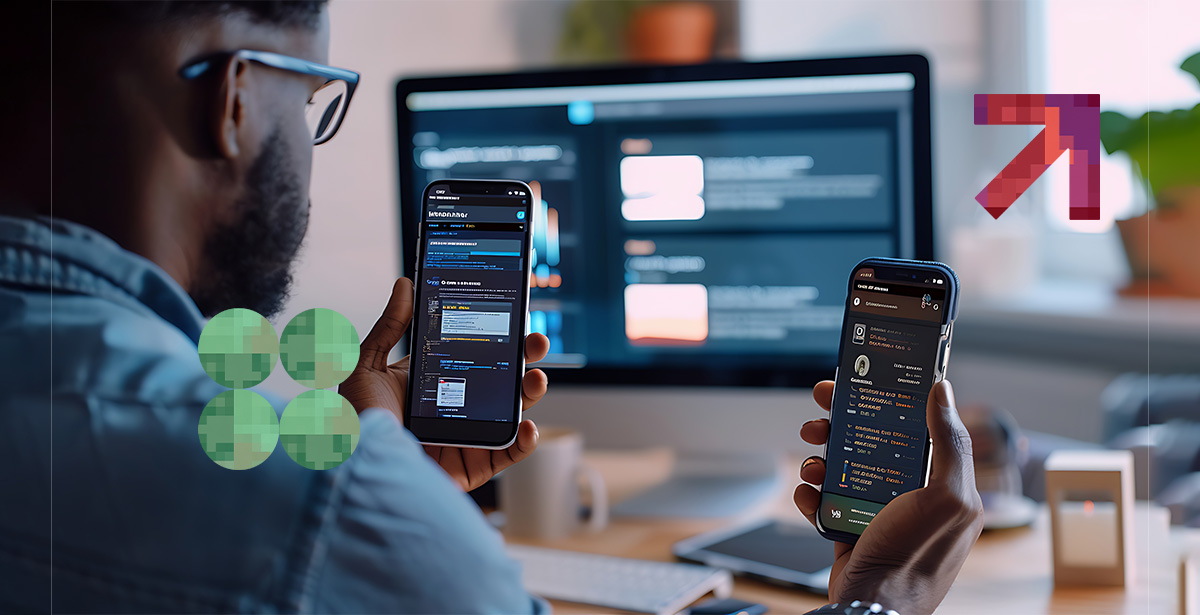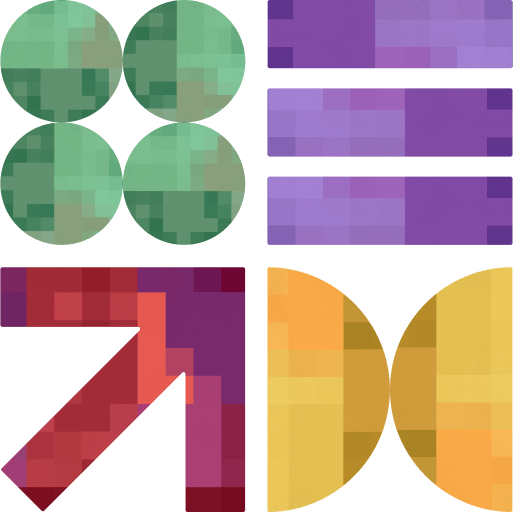7 Tips for Effective On-Demand Food Delivery App Development

The KSA food delivery market is booming, from USD 9.6 billion in 2024 to nearly USD 16 billion by 2030. That’s an 8.3% annual growth, fueled by a young, tech-first population, with over 70% under 30 and smartphones in almost every hand.
But the window to act is closing fast. Talabat and HungerStation already dominate. Meanwhile, newcomers like Meituan’s Keeta are investing over SR1 billion (Arab News) to capture up to 80% of the market by 2025.
So, unless you make a move soon, you’ll be lagging behind.
With demand surging and competition fierce, on-demand food delivery app development isn’t just an option, it’s the key to staying relevant and capturing your share of this booming market.
And with the following seven tips, you’ll be able to position yourself where the growth is happening.
💡 Don’t jump straight into development! Start with the 5 Ws and 1 H. Defining who you’re building for, what problem you’re solving, why it matters, where it fits in the market, when to launch, and how it will work gives you a crystal-clear vision and saves you from costly missteps of on-demand software development.
Tip 1) Do Your Research and Check Available Food Delivery App Development Solutions
Before investing in a food delivery app, understanding the market is essential. Comprehensive research provides insights into customer behavior, operational trends, and competitive dynamics. All of these are critical for making informed strategic decisions.
Analyze competitors’ strategies, including peak order times, payment methods, delivery efficiency, pricing, and user experience. Moreover, identify gaps in service quality, underserved locations, or niche cuisine offerings.
In the KSA, HungerStation and Talabat dominate the market with millions of active users, wide restaurant partnerships, and strong smartphone adoption rates. Understanding their strengths and weaknesses will help you position yourself strategically in the on-demand food delivery app development market.
Market research also helps estimate potential revenue, minimize investment risks, and guide decisions related to the likes of app features, marketing campaigns, and operational scale. Aligning development and business strategies with local demand ensures higher adoption, better user experience, and long-term success.
Tip 2) Understand the Different Types of On-Demand Food Delivery Software
On-demand food delivery apps follow multiple models, each with unique operational demands, scalability potential, and revenue implications. Basically, you need to choose from –
- Restaurant Aggregator Apps – Restaurant aggregator apps like DoorDash and Grubhub connect users to multiple restaurants without managing delivery. They offer lower operational costs and less control over service quality.
- Grocery Delivery Apps – Grocery delivery apps like Instacart and Amazon Fresh deliver groceries from stores or warehouses. They provide convenience, recurring demand, and strong customer retention.
- Full-Service Food Delivery Apps – Full-service platforms like Youfoodz and Deliveroo manage the entire process from food preparation to delivery, often through ghost kitchens. They offer greater control over customer experience but require significant infrastructure.
- B2B Food Delivery Apps – B2B apps such as ezCater and Fooda cater to corporate orders and supply chain logistics. They specialize in managing bulk and recurring requirements efficiently.
- Dark Kitchen Apps – Dark kitchen models like CloudKitchens operate delivery-only kitchens with no dine-in option. They enable rapid expansion while reducing real estate and operational costs.
Assess which model best aligns with available capital, operational capacity, and growth strategy. Understanding these variations helps predict scalability, user engagement, and ROI potential, supporting smarter decisions in competitive markets like KSA.
💡 Interested in creating a grocery delivery app? Grocery apps generate higher order frequency, recurring demand, and stronger customer loyalty than restaurant-only platforms. With the right logistics and tech, they can be a natural extension of your food delivery business. But success depends on mastering grocery delivery app development, knowing what to build, how to scale, and where real customer value lies.
Tip 3) Determine Features According to All Users
Successful on-demand food delivery app development must address four key user groups: customers, couriers, merchants, and administrators. Each of these groups requires tailored features to ensure seamless operations and strong engagement.
Customer App
This is the main interface for users. Through this app, users can –
- Register via email, phone, or social logins
- Store delivery addresses and payment methods
- View order history
- Search and filter by dish, restaurant, dietary preference, and delivery zone
The checkout process should be just as fast and flexible, supporting multiple payment methods, promo codes, tips, and loyalty rewards.
And if you want to really win users over, complement real-time tracking with GPS, ETAs, and traffic-aware updates.
Courier App
Drivers need a simple, reliable interface to manage orders, optimize routes, and update delivery status.
GPS-based navigation, batch order handling, automated updates, and photo proof reduce errors and improve efficiency.
Merchant App
Restaurants require tools for menu management, instant order notifications, and analytics for sales trends, inventory, and demand forecasting.
Integration with Point of Sale (POS) systems and dynamic pricing further enhances performance.
Admin Panel
The backend dashboard provides full visibility and control. Main features to include are user management, content updates, operational oversight, and analytics for revenue, orders, and growth trends.
Ensuring your app effectively supports all user groups is critical. And by aligning features with each group’s needs, long-term success is definitely on the cards.
Tip 4) Build Your App’s Features According to Your Business Model
In on-demand food delivery app development, your revenue model shapes app design, tech setup, and user experience. Each option impacts customers, merchants, and couriers differently, so select one that aligns with your growth strategy.
For instance –
- Commission-based Model – This is the most common model. Basically, you charge a percentage of each order, typically 15–30%. And rates can vary by merchant performance or order volume, allowing flexible pricing and partnerships. If this is the model you’re going for, you’ll need robust reporting and dispute resolution features.
- Delivery Charges – With this model, your fee may be flat or dynamic, depending on distance, demand, time, or weather. So, you’ll need to implement a surge pricing mechanism or set loyalty programs, or minimum order thresholds.
- Subscription Models – This model offers monthly or yearly plans with perks like free delivery, discounts, or exclusive deals. So, your app will require automated billing, churn tracking, and value-driven features.
Tip 5) Select the Right Food Delivery App Development Company for the Job
A capable partner can help prioritize must-have features, optimize performance, and iterate quickly, saving time and costs while reducing launch risk.
So, before hiring a development team, ensure that its members have proven experience with scalable, user-friendly food delivery apps.
Look for expertise in logistics, secure payment integration, real-time tracking, and flexible pricing. Review their portfolio and client feedback to assess reliability.
And especially be on the lookout for a team familiar with local regulations, popular payment gateways like STC Pay, and cultural preferences. This ensures strong collaboration, which in turn maximizes your app’s chances of success.
💡 Starting with a Minimum Viable Product (MVP) can be a great first step in on-demand food delivery app development. Instead of building every possible feature at once, an MVP focuses on the core functionality users truly need. This approach helps you validate your idea, enter the market faster, and collect valuable real-world feedback without overspending on features that may not matter. Once you understand how customers interact with the app, you can gradually add enhancements. By testing the waters with an MVP, you minimize risk, save costs, and ensure your final product is shaped by actual user demand rather than assumptions.
Tip 6) Design Your App’s Architecture for Scalability
Designing the architecture with scalability in mind ensures the platform can handle increasing users, orders, and data without performance drops.
A scalable architecture uses modular code, cloud infrastructure, load balancing, and microservices to support rapid growth. This allows the app to add new features, integrate additional restaurants, or expand to multiple cities without costly overhauls.
Real-time order tracking, payment processing, and routing algorithms can further handle peak demand efficiently, maintaining a seamless user experience.
For the Kingdom, where urban centers have high order density, a scalable design allows rapid adaptation to market trends and growth opportunities. This, in turn, ensures reliability and helps maintain a positive brand reputation.
Tip 7) Stay Connected with Your Food Delivery Application Development Partner to Fine-Tune Your App
Developing a successful on-demand food delivery app doesn’t end at launch.
Continuous collaboration with your development partner ensures the app evolves with market demands, user expectations, and operational needs. So, you’ll need to communicate regularly for timely bug fixes, performance optimizations, and feature enhancements.
In on-demand food delivery app development, this ongoing partnership further supports scalability, enabling new restaurants, cities, or service types without disrupting existing operations.
Additionally, your development partners bring technical expertise for integrating new technologies, like AI-powered recommendations, dynamic pricing, or predictive delivery analytics. These technologies enhance customer experience and operational efficiency.
We’re Ready to Start Your On-Demand Food Delivery App Development Project
Choosing the right partner for your food delivery app development can determine whether you lead the market or get left behind.
At DPL, we’ve spent 20+ years building scalable, high-performing apps for both startups and enterprises. From MVPs to enterprise-grade platforms, our expertise in real-time tracking, secure payments, and user-first design ensures your product isn’t just built, it’s built to win.
Your idea deserves more than code. It deserves a lasting impact.
Fill out the form below, and let’s build the next big food delivery success together.





